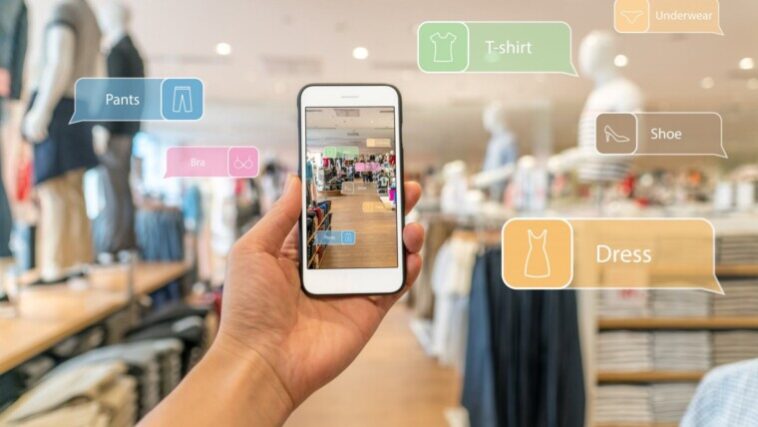Internet access is becoming ubiquitous in 2024. More than half the population of the world uses network technology daily to perform tasks, ranging from random surfing to remote working. This includes shopping, as well.
Gone are the days when consumers would drive down to a local retail store to buy goods or subscribe to services. Everything has transitioned online now. Using an internet-enabled device, people can hop on the World Wide Web, scan the e-marketplaces, find their favorite brands, compare products or services, pay for the purchases virtually via online banking transactions, and have their goods delivered to their addresses the same day, all without moving an inch from their couch.
None of this would be possible without a sound internet connection. Click here for more info on the best network plans for consumers. Thus, by the looks of it, online shopping seems to be the ultimate future. Let’s discover multiple ways in which e-shopping has integrated into our lives and the promises it makes for years to come.
Personalized Shopping Experience

Consumers love the freedom and flexibility that the World Wide Web provides. This translates to their expectations from online stores, as well. Brands that “personalize” their offerings succeed in converting 15% to 20% more leads into life-long customers, as per a finding from McKinsey. Personalized shopping means that users can create their digital profiles on the brand website, add interesting items to their wish list, customize products or services, choose their own method of payment and delivery, so on and so forth.
The more freedom, choices, and options a customer has while shopping, the more likely they are to stick to a brand. An e-shopping experience that is tailored to suit an individual buyer’s needs goes a long way, whereas, a one-size-fits-all strategy only falls on deaf ears. Therefore, personalization and customization are the two pillars, which frame the customer expectations from e-commerce, nowadays.
AI-Powered Recommendations

Technology has been upgrading commerce ever since the first marketplace launched on the web. Today, Artificial Intelligence algorithms have the power to deliver a favorable and seamless online shopping experience. Once integrated into a brand website, AI can sense a user’s preferences, interests, and patterns of shopping. Not only that, it can predict their intent from searching habits, clicks, and impressions, and post relevant recommendations to cut their research time in half and entice them to buy products by satisfying their subliminal thoughts.
Accenture relates that 91% of users are more likely to engage with businesses that remember their tastes, recognize their shopping behavior, and offer relevant recommendations based on them. Nowadays, many companies like Netflix are utilizing AI to render a personalized user experience, making the customers feel valued.
AR-Interactive Testing
In simple terms, Augmented Reality is a technology, which plasters an artificial simulation on the physical world. Remember Pokémon Go? It’s an AR game, which enables the players to open their smartphone cameras and capture hidden Poké balls in their actual environment. Not surprisingly, Augmented Reality has also made an appearance in the online shopping domain.
Many companies are utilizing AR to show their customers how a product would perform in reality using 3D imaging and superimposing techniques. For instance, paint-manufacturing brands are introducing AR product trials to let their customers see how a paint color would appear on their actual walls. This interactive testing while shopping redefines the entire shopping experience. This is why, as per Deloitte research, 71% of consumers prefer brands with AR-interactive models nowadays.
Voice-Assisted Shopping

Alexa, Siri, Bixby, Cortana, or Google Assistant have become honorary members of our household. These are digital voice assistants, with smart AI technology and machine-learning capability built into them, which listen to voice commands from their human users, respond effectively and perform the requested tasks swiftly. Amazon Alexa, for instance, can help its users shop for products online using voice commands only. All you have to do is wake Alexa up by speaking into an Echo or some other compatible device and ask it to search for a coffee maker online.
If you’re ordering from Amazon especially, Alexa will not only track your order processing but also inform you of the shipping, so you can stay updated on the progress. This voice-assisted shopping is what we’ll see frequently in the future. According to a recent survey, voice-enabled shopping is anticipated to hit $40 billion by 2024 in the US alone!
Mobile-Friendly Optimizations
Smartphone technology permeates the modern lifestyle unlike any other invention in this era. As per Statista, the number of smartphone users is expected to grow to 6.648 billion by next year. This means that any brand that does not have a mobile-friendly website or better, a smartphone shopping app, by 2024 will probably face huge losses and be crushed by its competitors in one market blow. Indeed, online shopping has gone mobile.
Rather than e-shopping via their desktops, which constrict their movement, people prefer to shop on the go, using their smartphones. All they need is internet access and they can order stuff from Amazon or any other e-retail giant, whether they are dining at a restaurant or waiting at the airport.
Social Media Store Fronts

Social media is all the hype, these days. Its uses are not just limited to networking with your friends and family, but it can also connect you to booming businesses and brands. In other words, you can shop for products or services on social media, as well. Social media ads and other campaigns play a huge role in attracting users, while optimized social media sales engines can ensure a smooth purchasing journey. Customer service can also be deployed on social media to proactively fulfill customer requests and respond to customer problems.
Such convenience is actually expected by customers of online brands on social media. This is how social media influences the e-shopping trend. We can say for sure that any brand which does not have a social presence won’t be able to target some 4.48 billion active social media users, or in other words, potential leads.
The Final Word
The way people shop has changed drastically over time. Technology has intermingled with e-commerce to elevate buying journeys of online users. As the aforementioned pointers prove, brick-and-mortar storefronts won’t last for long. Instead, the future will be ruled by e-shopping.




